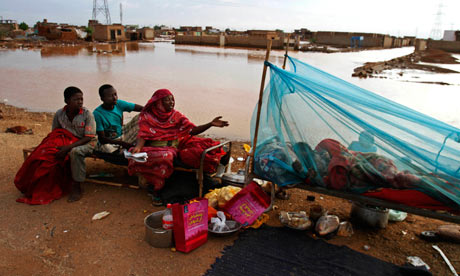DES MOINES, Iowa -- A growing season that began unusually wet and cold in the Midwest is finishing hot and dry, renewing worries of drought and its impact on crops.
"Over the last couple of months, drought conditions have expanded in the Midwest from northern Missouri to portions of Minnesota and the eastern Dakotas," said weather.com meteorologist
Chris Dolce. "Severe drought conditions now exist in parts of central Iowa and northern Missouri. As of Aug. 30, Des Moines, Iowa has seen under an inch of rain for the month. The total rainfall deficit since June 1 has grown to more than eight inches."
Temperatures soared to records in recent days in parts of the region, reaching nearly 100 degrees in some areas.
"It's about the worst case scenario we could have with these high temperatures and the lack of water with soil moisture declining," said Roger Elmore, an agronomy professor at Iowa State University.
Latest National Drought Status
A wet, cool spring delayed planting and slowed crop growth - but it also replenished soil moisture in many crop producing states, causing some of last year's widespread drought to retreat. The rain stopped in July in many of those states, however, and as the soil dried out, the heat set in and stressed corn and soybean crops.
The southeast Iowa city of Burlington, which is surrounded by corn fields, had its wettest spring on record at 19.23 inches of precipitation, nearly 8 inches above normal. Yet it's now on track to have its driest summer on record, with only 3.86 inches so far, 8.41 inches below normal.
Wayne Humphries farms about 1,000 acres about 45 miles north of Burlington at Columbus Junction. He grows corn and soybeans and raises hogs.
He said he delayed planting by about 30 days because of wet fields and now is watching the lower leaves of cornstalks turn brown from lack of moisture. He hasn't seen a measurable rain for 30 days.
Soybean plants are suffering too as seeds are developing in the pods.
"I have solace in the fact that we did everything we could and we did it to the best of our ability and now whatever happens, happens," he said. "It's sort of a philosophical moment."
Corn and soybeans have developed enough that weather conditions are not likely to reduce the number of kernels on the corn cob or the seeds in soybean pods. But those kernels and seeds could develop smaller and weigh less, which could reduce the harvest this fall, Elmore said.
Unless it's a drastic reduction, it's unlikely to affect consumer prices at the grocery store. A shortage of corn and soybeans from a bad year would likely have a more immediate impact on meat prices because it costs more for livestock farmers to feed their herds.
“The crops are holding up good. In another week or so, they are going to need a drink.
”
Dean Stoskopf, farmer
The dry conditions aren't confined to Middle America: for the first time since early April, more than half of the country is now in some stage of drought, according to the weekly U.S. Drought Monitor report released Thursday. That includes much of the West, where the hot, dry weather has fueled wildfires.
Drought conditions surged in the past week in corn-producing states, up to 45 percent of the region from 25 percent the week before, said Brad Rippey, a meteorologist with the U.S. Department of Agriculture. Soybeans in drought also increased sharply in the last week to 38 percent from 16 percent, he said.
In northwest Kansas, farmer Brian Baalman watched the temperature reach 94 degrees on his truck thermometer Wednesday. He farms about 30 miles west of Colby, where corn plants are turning white and ears are drooping as the heat kills the corn that's not irrigated.
"We are basically back to where we (were) in the moisture situation before the rain came, you know," he said. "Go west of me and it is a lot different, drier yet, and folks are worse off than we are," he said.
Lack of rain has caused drought conditions to expand in most of Wisconsin and Minnesota, along with eastern Illinois, western Indiana and northern Michigan, and parts of Texas, Arkansas, and Louisiana, according to the drought report.












